All about eggplant picking
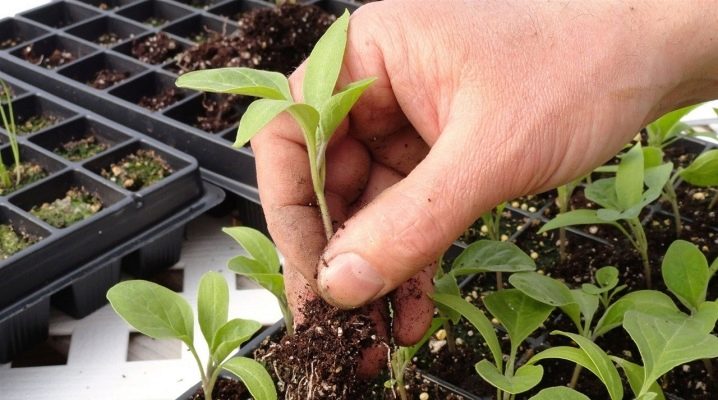
Eggplants are thermophilic, a little even capricious (but you can handle it) and demanding plants. This means that many actions carried out with them can become stressful for the culture, for example, picking. You should find out why the procedure is considered necessary, in what time frame and according to what rules to carry it out.
The need for a procedure
To get an early harvest, it is preferable to grow this crop through seedlings. Sowing seeds should be carried out in early spring. And there are two ways to grow seedlings: with a pick or without. They say that eggplants do not tolerate picking very well, but at the same time many experts assure that picking is good for the plant, it helps it to build up a powerful root system. Sowing seeds in boxes saves time (and energy) at the first stage of cultivation. Seedlings that need additional lighting, or numerous seedlings, definitely need a pick.
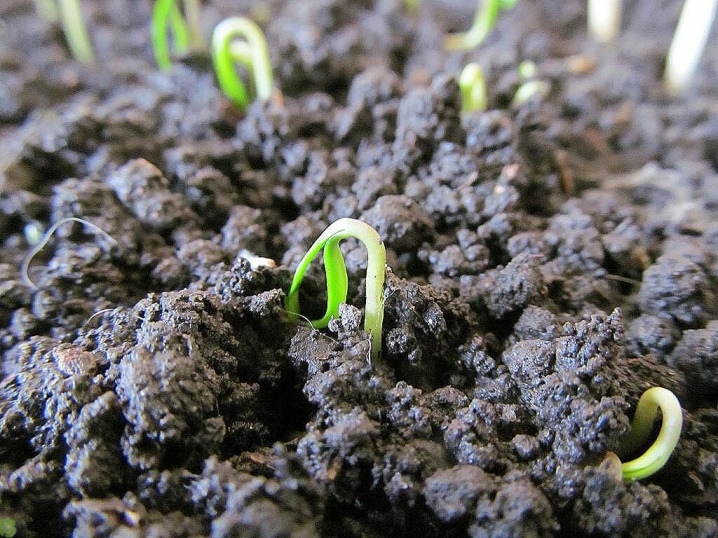
What are the advantages of the procedure:
-
more oxygen enters the roots;
-
supplementary lighting of seedlings is so simplified;
-
plants are not crowded, do not interfere with each other;
-
the risk of roots decaying is very small.
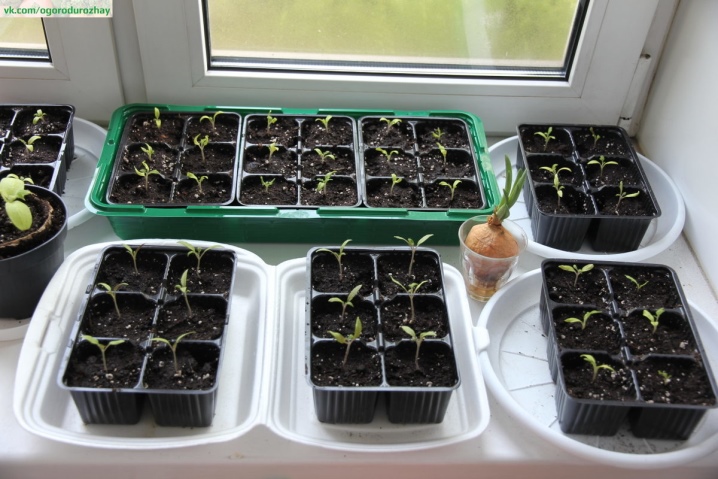
And each of these reasons weighs a lot, so do not underestimate the procedure. But there are risks as well. The main one is the delay in the development of seedlings. The root system of the vegetable is fragile, delicate, and if it is injured, the recovery will take a long time, at least two weeks. Or even all four.
If two procedures are adjacent - picking and transplanting into the ground, then the developmental delay can be equal to a month. That is, the culture will be grown for about 60 days. If you do without picking, 40-45 days should be enough, and then the eggplants will go to the greenhouse or into the open ground.

Dates of the
Usually they decide to pick a pick before 2-3 true leaves appear. But this is not the case with eggplants: they are dived even earlier, at the stage of cotyledon leaves, at which time adult leaves are just beginning to appear. Well, a maximum of 1-2 leaves are already on the culture. Of course, someone decides to turn to more mature seedlings, but for eggplants this is a very big stress, and the chances of successful development are then reduced.
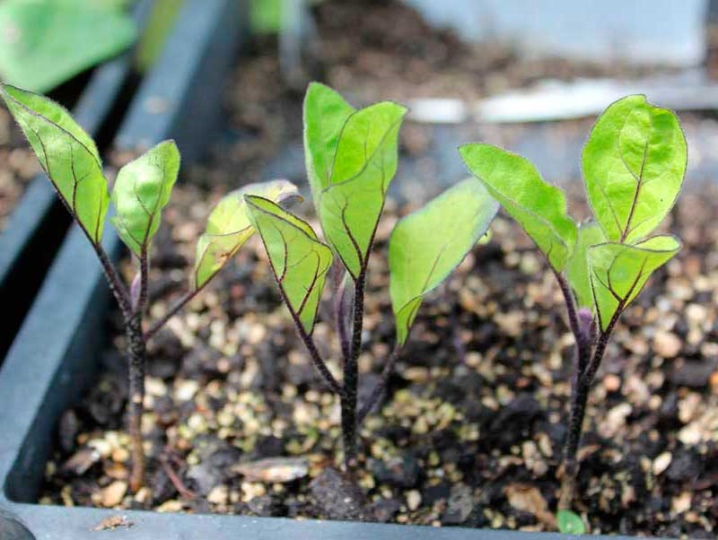
To calculate the moment of sowing, picking and predicted developmental delay, you need to take into account the growing season of a given crop. Without delays in development, from the emergence of seedlings to the removal of technically mature fruits, it takes from 100 to 156 days, and if the varieties are early ripe - 95-105 days. But there are also such fast varieties that they are ready to bear fruit in 70 days. Early ripe eggplants are planted at the age of 45-50 days, and almost the same amount remains before harvest (a little more). And ultra-early varieties are planted in 25-30 days, plus one must remember the time for plant recovery after stress (both picking and transplanting are stress).

What the lunar calendar says about the timing of the pick:
-
it is better to plan a landing on the growing moon - this will strengthen the roots and crown of the vegetable;
-
on the waning moon, if you land or dive, the risks are assessed as neutral;
-
full moon and new moon - definitely not for a pick;
-
if the moon is in the sign of Virgo - the optimal moment for landing or picking (there are those who are guided by the lunar biosodiacal calendar, such information is also in demand, they listen to it).

Auspicious days according to the lunar calendar should be watched for the current year (there are times when the summer resident does not pay attention to the year).
But what about those who do without picking, because it is possible - and it really is. The plant is not injured, does not experience stress. And there are varieties that should not be dived, there is usually such information on the package with seeds.
Fundamental rules
If, first of all, the seedlings themselves are grown according to all the rules, it will more easily tolerate a pick. If the seeds are prepared correctly, sown in a well-composed soil, if the seedlings had enough heat and lighting, feeding, then there is no need to doubt the strength and health of the seedlings. A pick is not terrible for such seedlings.
Soil for a pick - how to prepare it.
-
The store substrate for seedlings is mixed with garden soil in equal proportions. Garden soil by gardeners is usually harvested for the winter.
-
To keep the soil loose enough, a little vermiculite is added to the mixture, which can be replaced, for example, with coconut substrate, sand and ash.
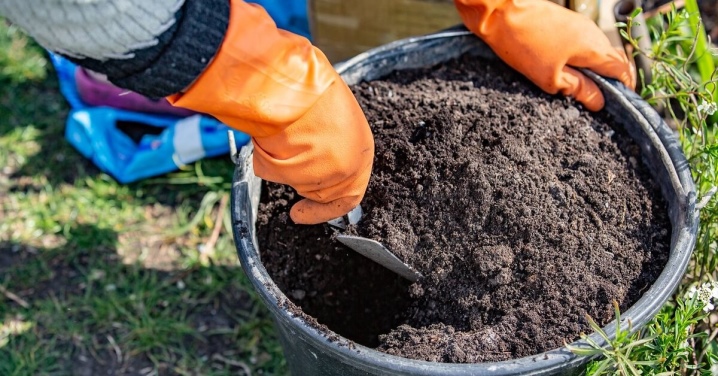
Why do you need garden land: so it will be easier for seedlings to transfer subsequent planting in the ground on the street or in a greenhouse. There will be no stress when changing land, that's understandable.
A couple of hours before the pick, you can water the seedlings well. The fact is that it is much easier to get plants out of a damp substrate, the roots are less injured. For the pick itself, you need to prepare containers or any of their analogues with drainage holes made with a volume of about 0.3 liters.
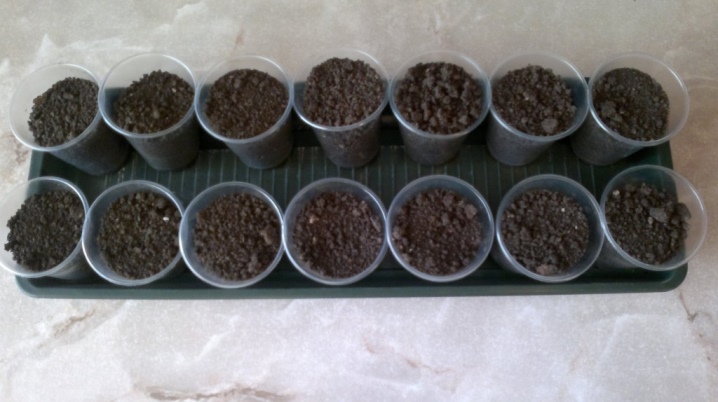
And until the very transplant to a new place, or rather, a permanent one, the seedlings will stay in a new container. It is difficult to find something better than peat cups, and their volume is 300-500 ml. Before transplanting, you need to disinfect the containers with a weak manganese solution, this is a standard procedure.
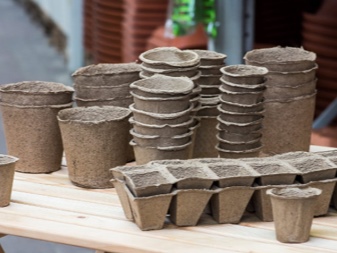
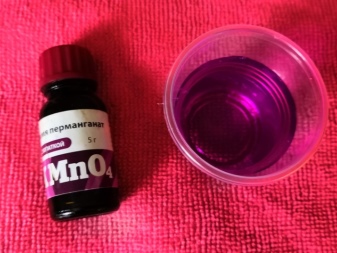
Ready-made substrate is a very convenient purchase, especially for beginners. And even experts advise buying it, because, of course, you can make a suitable soil yourself, but it is very easy to make a mistake in the accuracy of the composition and proportions.
If you still don't want to buy, then the optimal recipe is as follows: 3 shares of garden land to 5 shares of humus and 1 part of peat.
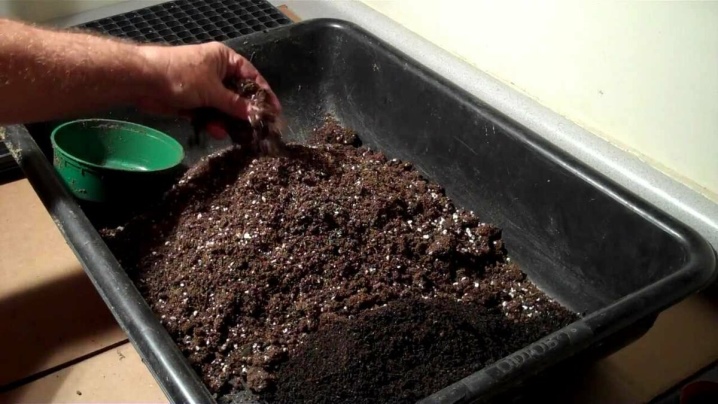
Everything else is a picking technique with its own nuances and peculiarities. For example, beginners may think that seedlings must be transplanted to depth. But if there were no problems in the development of seedlings, there is no need for this. You need to deepen only to the level of the previous container for seedlings.
By the way, if you want to follow a non-standard path, you can grow seedlings in snails. And this method has a lot of advantages: both space on the same windowsill is saved, and less substrate will be consumed.
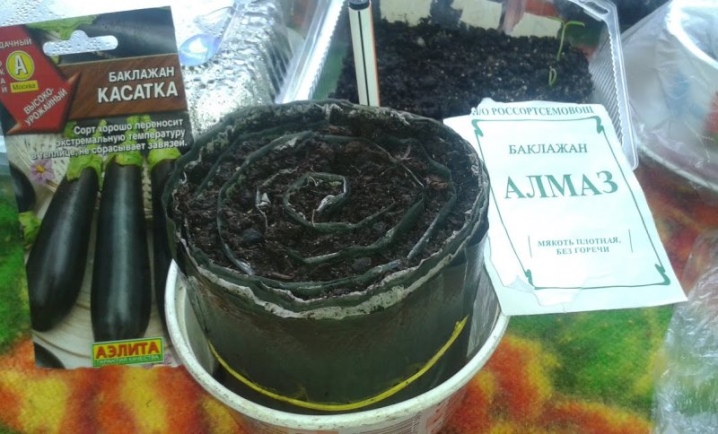
Step-by-step instruction
This is an algorithm that helps to correctly dive eggplants at home. Even before planting, all seedlings must be carefully examined. Weak and sick samples - aside, they definitely will not tolerate a pick. High-quality seedlings always have a uniform leaf color, a strong and strong stem, on which no deformations are visible.
The scheme of the pick.
-
The seedlings should be moistened, it is better to do this half an hour before the pick.
-
New containers also need to be inspected - they must be clean, decontaminated, with drainage done. If not peat pots, then ordinary plastic disposable cups are quite suitable, they are cheap, affordable.
-
Expanded clay must be poured into the container (perlite is also possible), it will become the drainage system for the eggplants. The drainage layer is not made less than 1 cm.
-
Prepared soil is sent to the container, it also needs to be moistened. A full glass of earth should not be poured; 2-3 cm should remain between the edge of the container and the ground level.
-
If the soil settles heavily after watering, you can add a little more soil on top.
-
A small deepening is made in the ground, where the seedling is sent.
-
It is impossible to deepen the plants too much: it is necessary that they remain at about the same level as before the pick.
-
It is necessary to sprinkle the eggplant with soil a little, tamp it.
-
It remains only to water the plant with warm (about 20 degrees) settled water.
But after transplanting and picking, the process is not over. A pick cannot be considered successful if the procedure has not been transformed into caring for the best transplanted samples.
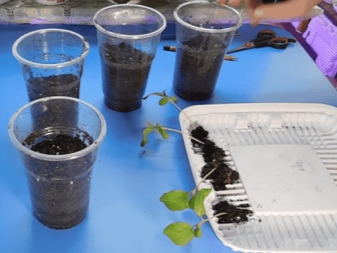
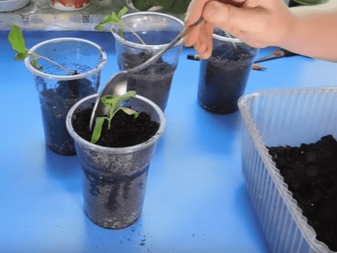
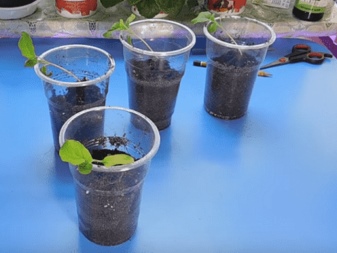
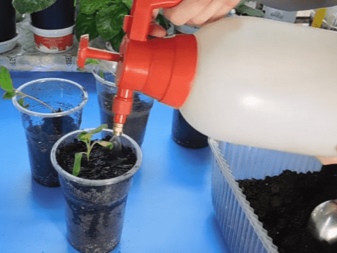
This is what the post-dive care is all about.
-
The seedlings will be very vulnerable and will most likely react to any stress. Temperature is especially important for dived plants, we can say that the first 5 days will be decisive - at least + 22-24 ° C.
-
The bright sun is contraindicated for plants, it is destructive for them, who have just undergone a pick. For some time, the seedlings must be shaded.
-
It would be nice to organize additional illumination, which will help fluorescent lamps. With proper lighting at 12 o'clock, the eggplant can develop normally.
-
In about 5 days, the seedlings will get stronger. It is better to grow seedlings on the east window. If you can move it to a greenhouse, it's best to do so.
-
As for watering, the first time after picking, the seedlings will be too critical to it, or rather, to excess moisture. But after the procedure, eggplants need abundant watering. Then the soil moisture will become moderate.
-
Usually, seedlings have to be watered every 3, maybe 4 days. But you still need to focus on drying out the soil. Better to water the ground with melt or rainwater. And if you use only tap water, it must be defended for at least 2 days, during which time all the excess chlorine will come out.
-
Water for irrigation should only be at room temperature. Cold, with a high probability, will harm the seedlings, which is fraught with an attack of fungi.
-
Top dressing after picking is carried out on the 14th day. And this will be root feeding. Previously, it was simply pointless to do them: the roots simply would not absorb what should benefit them, that is, the procedure would be in vain.
-
It is necessary to help the seedlings recover from stress, so the use of the drug "Epin-Extra", which is produced in liquid form, will not interfere. Dissolve 3-4 drops of the drug in a glass of water and spray. One procedure should be enough.
-
Irrigation should take place either in the morning (early) or in the evening. If you do this during the day, the sun's rays will act as lenses, and the seedlings will burn.
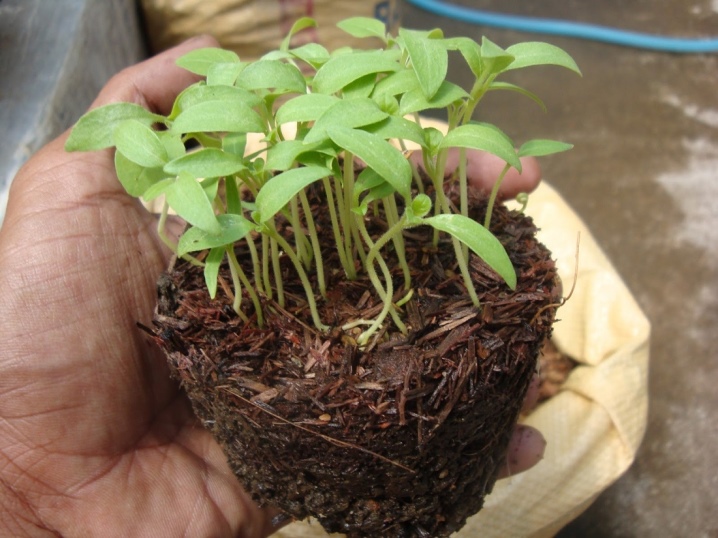
Alas, but eggplants after picking are not immune from negative growth and development scenarios. If the procedure itself was carried out incorrectly, or the norms of subsequent care are violated, the seedlings will be very painful. It is possible that she may even die. If the leaves of eggplants wither after the dive, it means that the roots were damaged during the dive. This is treated - you can gently water the plants, but without waterlogging the earth. The leaves can be sprayed with a suitable growth promoter.
If the leaves of the seedlings turn yellow, it means that there is a lot of moisture in the ground, perhaps the eggplant also lacks nutrition. Watering needs to be dealt with, regulated (with a reference to the condition of the soil). It is better to take complex fertilizing. With a clear drying out of the leaves, they become white-yellow and dry out quickly.
To save the seedlings, you need "Epin" and, of course, the transfer of seedlings from a sunny place.
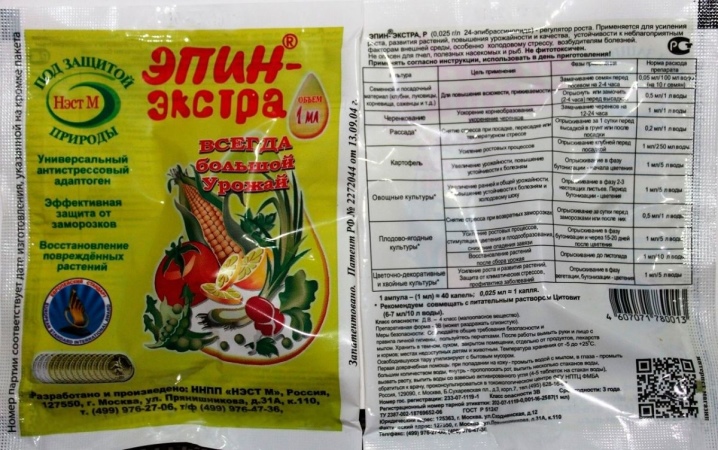
And even after a dive, sometimes the seedlings fall to the ground: it happens when the ground near the stem is strongly compacted. But sometimes it is also a sign of a dangerous black leg. If it's a matter of compaction, you need to carefully and regularly loosen the soil with just a toothpick, just next to the stem. But the black leg leaves no chance of saving the plant.
The seedlings stretching out after the pick indicate that the culture does not have enough light. There is nothing to be done, you need to organize her 12-hour daylight hours.
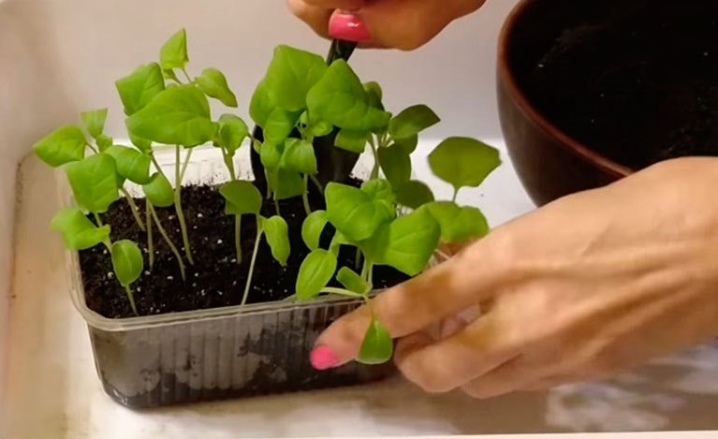
Obviously, picking is an important stage of cultivation, for which one prepares in advance. Whenever the seedling season starts, in March or February, you need to pick according to the algorithm that the plants "love" and tolerate well.













The comment was sent successfully.